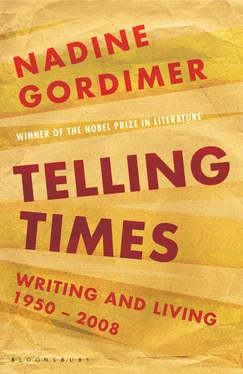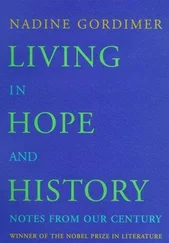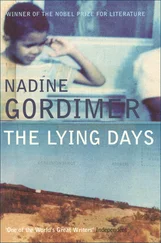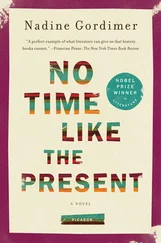It was this passion of his that led him to quick fatalistic anger when he heard that someone whom he knew was building an ‘Arab style’ house, with modern steel doors beneath a traditionally shaped portal. He knew where he could find a magnificent carved door dating from the eighteenth century. He could buy it for five — no, less — three pounds. It was there for the taking, almost. All it needed was sandpapering, and a new piece of wood where the bolt was fitted. And he knew someone who could do that properly, too.
He was even more despairing when he saw a ‘modern’ mosque going up with a mimbar , or pulpit, made of lacquered plywood instead of the carved and inlaid panelling and meshrebiya work — a delicate, hand-made wooden lattice — which is traditional. He told the people who had perpetrated this offence that even if the microphone had replaced the muezzin , there was no need for the mimbar to be a vulgar travesty. He could have got them a mimbar made of centuries-old ivory and wood, and restored by the last man in Cairo who truly understood the technique of the work …
They were not only chastened, but interested. Some short time later he received a call from two gentlemen from out of town.
Would he contract to supply, ready-made, a traditional mimbar for a new mosque under construction in Alexandria?
He was in the prefabricated mosque business.
When we were in Egypt in March last year, the work for the mosque in Alexandria was completed. Wally had taken a little trip there, to see his contract honoured, his beautiful mimbar delivered and set up against the wall to the right of the niche — the mihrab — which indicates the direction of Mecca. ‘But now I’m on something big, something much bigger,’ he murmured, when we congratulated him on the success of this first venture. His black eyes, mournful and gay at the same time, invited questions. But he couldn’t wait to be asked. He went on: ‘A mosque, oh yes. But not here. Far away You’ll laugh … A mosque in Washington.’
‘Wally, we’re going to Washington,’ warned my husband.
‘No, it’s true. You can go and see it. I want you to go and see it for me.’
I was not so sceptical as my husband. I had never travelled before. If Cairo existed at one end of a continent on which Johannesburg, where I live, is at the other. I was ready to believe that I might find a mosque as well as a White House in Washington.
‘I am making — at least my man Hassan is making — a mimbar for a mosque that’s going up in Washington. Tomorrow I’ll take you to see the work he’s doing. It’s beautiful.’ English is a little-used fourth language for Wally, whose real fluency belongs to French, German and Arabic, and in his mouth the adjective is still an incomparable superlative.
We pestered him with questions, in which he wasn’t really interested. Who was building a mosque in Washington! And what for? Who would worship there! His answers were vague. Diplomatic personnel, he supposed. What did it matter, anyway? The important thing was that this mosque, whether in Washington or Timbuctoo, would have a beautiful mimbar , made by Hassan in exactly the same way as it had been made for centuries. Old Hassan and his son were, so far as he knew, the last men in Cairo who still practised this ancient craft. We would see for ourselves tomorrow how perfect the mimbar was going to be.
Wally came to our hotel to fetch us after a late breakfast next morning. It was a week of riot and crisis in Egypt, when Nasser deposed Neguib and then Neguib deposed Nasser, and we got into the old Dodge under the eyes of a bored Egyptian soldier who crouched, half hidden by dusty shrubs, over one of the Bren guns that pointed at the steel from the Ezbekieh Gardens. We went, I suppose, the long way round to the workshop of Hassan the carpenter, because, as I quickly discovered, Wally never could resist making detours to take in places he loved, or another look at some old house with windows that he admired and hoped to buy or borrow. On this day he drove us via the site of the summer villa, on the Nile bank opposite the Nilometer, where my husband had lived while he worked for British Intelligence during the war. I had seen this little house on many photographs, knew exactly the disposition of its rooms, and its relation to the three great palm trees in the courtyard. Now only the three palm trees remained, on a piece of cleared sand overlooking the river. Wally had built that little house himself — without permission, on a piece of land belonging to someone else.
My husband paced out the familiar steps from one palm to another, looking lost. But Wally did not seem to mind the disappearance of the little house, its confiscation and demolition. ‘It’s a pity, isn’t it?’ he said cheerfully. ‘I’ve got a place in mind,’ his voice had dropped to its confidential low, ‘further along the Nile, out of town entirely. I’ll show you, soon. That façade I showed you on Sunday, you liked it? If I don’t need it for one of my prefabrication jobs, I want to use it for myself.’
Before we reached Hassan’s workshop we made another stop, this time at the Ibn Tulun mosque. Wally would not let us go into the famous mosque at the Citadel, nearby. ‘Rubbish,’ he said. ‘Impure style. This,’ ushering us into the Ibn Tulun, ‘this is, I think, my favourite mosque. Twelfth century.’ Inside the great mosque, in the sunlit square open to the sky, we did not talk at all. We crossed it and then walked slowly round all four sides beneath the repetitive vista of the colonnades, falling away behind us with the beautiful monotony of ripples in water. It was dark under the high roof, after the bright sun: the dark was repeated, out in the sun of the square, in the dark bodies of the kites which, when we looked out, passed between our eyes and the light like those proverbial clouds no bigger than a man’s hand. The mosque was deserted except for two old men who slept peacefully on straw mats.
Once we had left the mosque, the old car plunged and bucked into streets scarcely wide enough for a loaded donkey. We reinforced Wally’s thumping of the bodywork with yells and cries. Bare-bottomed brats pressed out of our way against filthy walls. At last we left the car and walked up a steep, humped and winding street, stale with age, strong with poverty. The children had their life in public, coming out the way rats emerge to play quietly next to their refuse heap. The girls especially did not look much like children; with their painted eyes, they were more like frail women, shrunken through long illness. One was beautiful, under the grotesquerie of kohl, an actress who had forgotten to take off her make-up — until you saw that only her head looked young and alive; the rest of her was shrivelled before it had grown, like an anemone plant I once transplanted when it was already in bud. This child was being nursemaid to the baby of the family, one of those appalling Egyptian babies which made me shudder, and then feel ashamed of my horror. When they are six or eight months old they are no bigger than a newborn, but their pocket-watch-sized heads, covered with straight black hair, are veteran with survival of the dirt in which they feebly lie, and which would have killed the fat, pink-cheeked kind within days of birth. Past the baby, the street ended at the entrance to a kind of courtyard. Once, I suppose, it had been a garden. Now grass or flowers or paving were replaced by a surface of rubble from the crumbling building to which the courtyard belonged. In the middle stood a well-used grey Peugeot car.
Wally was smiling. ‘Come,’ he said, and took my arm, ‘This is Hassan’s place. He is here.’
* * *
Читать дальше












